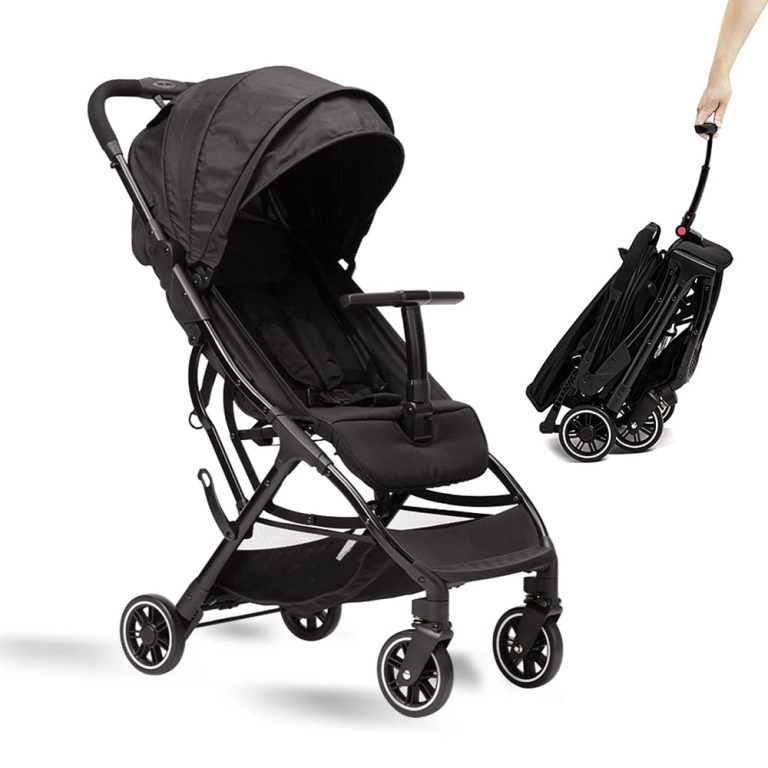9 Best Boots for Plantar Fasciitis: Top Picks for Comfort and Support in 2024
If you suffer from plantar fasciitis, you know how crucial the right footwear is for managing pain and providing support. Finding the perfect pair of boots can make all the difference in your daily comfort and mobility. With so many options on the market, it’s essential to choose boots that offer the right blend of cushioning, arch support, and durability.
In this article, we’ve rounded up the 9 best boots for plantar fasciitis to help you make an informed decision. Whether you’re looking for stylish options for the office or rugged boots for outdoor adventures, you’ll find something that meets your needs and keeps your feet happy. Dive in to discover your perfect pair and step out in comfort and confidence.
Essential Features in Boots for Plantar Fasciitis
When dealing with plantar fasciitis, specific features in your boots can make a significant difference in comfort and pain relief. Here are the key features to look for:
Arch Support
Optimal arch support is essential for reducing strain on your plantar fascia. Look for boots with built-in orthotic insoles or deep heel cups. Brands like Vionic or Superfeet offer excellent options. Ensure the arch support fits your foot shape to prevent overpronation or supination.
Cushioning and Comfort
Proper cushioning absorbs shock and reduces impact on your heel. Memory foam insoles, gel pads, or EVA midsoles provide exceptional comfort. Prioritize boots with cushioned footbeds and roomy toe boxes to avoid additional foot stress. Consider brands like Skechers or Orthofeet renowned for their comfort features.
Stability and Support
Good stability in boots prevents unnecessary foot movement and offers better support. Seek out features like sturdy outsoles, ankle support, and reinforced shanks. Boots with a firm yet flexible sole structure, like those from Keen or Merrell, can offer the necessary balance and support for daily activities.
1. Best Overall Boot for Plantar Fasciitis
When dealing with plantar fasciitis, choosing the right boot can make all the difference. We’ve identified the top choice to provide you with unmatched comfort and support.
Key Features
- Orthotic Insoles: Podiatrist-designed to offer exceptional arch support. Orthotic insoles help maintain your foot’s natural alignment, reducing strain on the plantar fascia.
- Deep Heel Cups: Designed to cradle your heel, these cups stabilize your foot and absorb shock. Deep heel cups are essential for distributing pressure evenly.
- Memory Foam Insoles: Provide cushioning that conforms to your foot’s shape. Memory foam insoles ensure personalized comfort and alleviate pressure points.
- Sturdy Outsoles: Deliver excellent traction and stability. Sturdy outsoles prevent slips and support your foot’s natural motion.
- Pros:
- Superior Comfort: Memory foam and orthotic insoles offer unparalleled cushioning and arch support, making long hours on your feet more bearable.
- Excellent Stability: Deep heel cups and sturdy outsoles provide a steady and safe walking experience, reducing the risk of further injury.
- Durability: High-quality materials ensure these boots last a long time, offering consistent support and comfort.
- Cons:
- Price: High-quality boots for plantar fasciitis can be more expensive. However, the investment is often worth the relief they provide.
- Style Options: While highly functional, some designs may lack fashion-forward appeal. You might find fewer trendy options.
With the right pair of boots, managing plantar fasciitis becomes significantly easier, improving your daily comfort and mobility.
2. Best Budget-Friendly Boot
You don’t have to break the bank to find a boot that helps manage plantar fasciitis effectively.
Key Features
- Arch Support: Ensures your arch is supported to reduce strain on the plantar fascia.
- Cushioning: Provides necessary shock absorption, reducing pressure on your feet.
- Affordable Price: Offers value without compromising on essential features.
- Durable Sole: Ensures the boot lasts while providing the stability you need.
- Breathable Material: Keeps your feet comfortable, especially during extended wear.
Pros and Cons
Pros:
- Cost-Effective: Much more affordable than premium options.
- Sufficient Support: Features like arch support and cushioning are on par with more expensive boots.
- Versatile Usage: Suitable for various occasions, both casual and semi-formal.
Cons:
- Limited Lifespan: May not be as durable as high-end alternatives.
- Basic Design: Often lacks the stylish appeal of pricier boots.
- Less Advanced Materials: May use cheaper materials that offer less comfort over long periods.
By focusing on these key features and weighing the pros and cons, you can find a budget-friendly boot that effectively eases the pain associated with plantar fasciitis.
3. Best High-End Boot for Plantar Fasciitis
When you’re investing in a high-end boot for plantar fasciitis, you want premium materials and advanced support technologies. Here’s what to look for in the best options.
Key Features
- Superior Arch Support: These boots have advanced orthotic insoles that maintain proper foot alignment.
- Enhanced Cushioning: They feature multi-layered cushioning systems for shock absorption and enhanced comfort.
- Premium Materials: High-quality leather, waterproof linings, and durable outsoles ensure long-lasting use.
- Adjustable Fit: Include adjustable laces and straps to customize the fit for maximum stability and comfort.
- Temperature Control: Footbeds with moisture-wicking properties and breathable linings keep feet dry and comfortable.
Pros and Cons
Pros:
- Excellent Support: Superior arch support reduces stress on the plantar fascia.
- Durability: High-end materials increase the longevity, making them a worthwhile investment.
- Comfort: Advanced cushioning provides unparalleled comfort for all-day wear.
- Style: Often designed with fashionable aesthetics, allowing you to wear them in various settings.
- Price: The high cost may be a barrier for some.
- Break-in Period: Premium materials may require a longer break-in period.
- Weight: These boots can be heavier due to superior materials and added features.
By opting for a high-end boot, you’re investing in quality and comfort, which can significantly help in managing plantar fasciitis pain.
4. Best Boot for Daily Wear
Finding the perfect boot for daily wear when you have plantar fasciitis can make all the difference. Comfort, support, and style should seamlessly blend together in your go-to footwear.
Key Features
- Excellent Arch Support: Look for boots with built-in orthotics or strong arch support to alleviate pressure on your plantar fascia.
- Cushioning: Opt for models with ample cushioning in the midsole and heel areas to absorb shock from walking on hard surfaces.
- Breathable Materials: Choose boots made from materials like leather or mesh that allow for air circulation, keeping your feet dry and comfortable all day.
- Durable Outsole: Aim for a rubber outsole with a good grip for better stability and to prevent slips, ensuring support for your feet.
- Adjustable Fit: Consider boots with laces, straps, or buckles, enabling you to customize the fit to your comfort level.
Pros and Cons
-
Pros:
- All-Day Comfort: High-quality materials and design provide lasting comfort, reducing plantar fasciitis pain during prolonged wear.
- Versatile Style: Many daily-wear boots offer versatile designs that can be paired with various outfits, from casual to semi-formal.
- Support and Stability: Enhanced arch support and cushioning offer the needed stability for walking throughout the day.
- Durability: Durable construction ensures these boots can withstand daily use without compromising support.
- Cost: Some of these boots might be on the pricier side due to the quality materials and craftsmanship.
- Break-In Period: New boots may require a brief break-in period before they provide optimal comfort.
- Limited Designs: Specific therapeutic features may restrict style options, although the available designs can still be quite fashionable.
5. Best Boot for Hiking
Finding the right hiking boot for plantar fasciitis ensures you can enjoy long hikes without pain or discomfort.
Key Features
- Arch Support: Provides optimal support to alleviate pressure on your plantar fascia, keeping you comfortable during steep ascents.
- Cushioning: Utilizes advanced foam materials to absorb shock and reduce impact on your feet, ideal for rough terrains.
- Durable Outsoles: Features rugged, anti-slip outsoles for excellent grip and stability on varied surfaces.
- Waterproofing: Includes waterproof membranes to keep your feet dry in wet conditions.
- Breathability: Employs breathable materials to ensure good airflow, reducing sweat and blisters.
- Adjustable Fit: Comes with lacing systems that allow for a customized, snug fit, providing better ankle support.
Pros and Cons
- All-Terrain Stability: Offers stable footing and reduces the risk of slipping, even on uneven grounds.
- Long-Lasting Comfort: Maintains comfort over extended hikes with superior cushioning and support.
- Weather Protection: Keeps feet dry and comfortable in various weather conditions with effective waterproofing.
- Ankle Support: Reduces the risk of ankle injuries due to its adjustable fit and solid structure.
- Weight: Can be heavier than standard footwear, adding extra weight for long-distance hikes.
- Cost: Often priced higher due to advanced features and specialized design.
- Break-In Time: May require a break-in period to reach maximum comfort and flexibility.
- Limited Design Choices: Typically available in practical rather than fashionable styles, focusing more on function than form.
6. Best Waterproof Boot
Finding the best waterproof boot can be a game-changer, especially if you have plantar fasciitis and spend a lot of time outdoors. Such boots offer the needed protection and support for your feet in wet conditions.
Key Features
Waterproof Material: Quality waterproof boots use materials like Gore-Tex to keep your feet dry in wet environments.
Arch Support: Look for boots with built-in orthotic insoles to provide the necessary arch support for plantar fasciitis.
Cushioning: Extra cushioning, particularly in the heel area, helps absorb shock and reduce strain on your feet.
Durable Outsoles: Boots with rugged outsoles provide excellent traction on slippery surfaces, enhancing your safety.
Breathability: Despite being waterproof, these boots should have breathable linings to keep your feet comfortable.
Pros and Cons
Pros:
- Keeps Feet Dry: Superior waterproofing ensures your feet stay dry in wet conditions.
- Reduces Pain: Enhanced arch support and cushioning alleviate plantar fasciitis pain.
- Increases Safety: Durable outsoles improve traction on wet and slippery terrain.
- Heavier Weight: Waterproof materials and extra features can make these boots heavier.
- Higher Cost: Premium waterproof boots with specific features for plantar fasciitis often come with a higher price tag.
Choosing the right waterproof boot can provide comfort, safety, and relief from plantar fasciitis, making outdoor activities enjoyable again.
7. Best Boot for Work Environments
Having the right boots for work environments is crucial when you have plantar fasciitis. The ideal work boot should offer superior support and comfort to keep you productive throughout your day.
Key Features
- Arch Support: Ensuring the boots have excellent arch support reduces strain on the plantar fascia. Look for designs with built-in orthotic insoles to provide maximum relief.
- Cushioning: Adequate cushioning absorbs shock and minimizes impact on your feet. Memory foam or gel inserts are particularly effective in providing that extra comfort.
- Durability: Choose boots made from high-quality materials to withstand the rigors of demanding work environments. Leather and reinforced stitching can extend the life of your footwear.
- Slip-Resistance: Safety is essential in a work setting. Opt for boots with slip-resistant outsoles to ensure stability on various surfaces, reducing the risk of falls and further injury.
- Breathability: Working long hours means your feet need to stay dry and comfortable. Breathable materials like mesh or moisture-wicking linings help maintain a cool environment within the boots.
- Adjustable Fit: An adjustable fit allows you to customize the boot to your comfort level. Features like laces, straps, or buckles can provide a snug fit, accommodating any swelling throughout the day.
Pros and Cons
Pros:
- Enhanced Comfort: Boots with superior arch support and cushioning help alleviate the pain associated with plantar fasciitis, allowing you to work longer without discomfort.
- Increased Safety: Slip-resistant outsoles offer better traction, reducing the likelihood of slips and falls in a busy work environment.
- Long-Lasting: Durable materials like leather and reinforced stitching mean these boots can endure tough conditions, providing you with longer-lasting footwear.
- Customizable Fit: Adjustable features ensure the boots conform to your feet, offering personalized comfort and support throughout the day.
- Weight: High-quality, durable boots may be heavier than regular footwear, which could lead to additional fatigue over extended periods.
- Cost: Investing in boots with all the necessary features for plantar fasciitis might be more expensive compared to standard work boots.
- Break-In Period: Durable work boots often require a break-in period before they become fully comfortable for daily wear.
Choosing the best boot for work environments involves balancing comfort, safety, and quality to manage plantar fasciitis effectively throughout your workday.
8. Best Stylish Boot
Finding a stylish boot for plantar fasciitis doesn’t mean compromising on comfort and support. The right boot can offer both elegance and relief from heel pain.
Key Features
- Arch Support: Ensures your foot is correctly aligned to reduce pain.
- Cushioning: Provides pressure relief and comfort for extended wear.
- Quality Materials: Leather or high-grade synthetics ensure durability and a fashionable appearance.
- Adjustable Fit: Laces or zippers let you achieve the ideal snugness.
Pros and Cons
- Fashionable Design: Complements your outfits while keeping your feet comfortable.
- Versatile Wear: Suitable for various occasions, from casual to formal.
- Enhanced Comfort: Combines style with orthotic features to support your foot.
- Cost: Stylish boots with orthopedic features can be more expensive.
- Limited Options: Fewer choices in stylish designs tailored for plantar fasciitis.
- Break-in Period: Some boots may require time to become comfortable.
9. Best Lightweight Boot
When dealing with plantar fasciitis, finding a lightweight boot can significantly reduce strain on your feet while providing the support you need.
Key Features
Lightweight Design: Ensures minimal strain on the plantar fascia.
Arch Support: Essential for alleviating heel pain and providing stability.
Cushioning: Protects against impact and provides all-day comfort.
Breathability: Keeps feet cool and dry, reducing discomfort.
Adjustable Fit: Offers customization to ensure perfect support and comfort.
Pros and Adverse Effects
Pros
Ease of Wear: Lightweight boots are easier to walk in, reducing fatigue.
Pain Relief: Proper arch support and cushioning help alleviate plantar fasciitis pain.
Improved Mobility: Less strain on your feet means you can move more freely.
Adverse Effects
Durability Issues: Lightweight materials may wear out faster.
Limited High-Impact Protection: May provide less protection in rough conditions.
Tips for Using Boots for Plantar Fasciitis
Breaking in New Boots
Start slowly when breaking in new boots. Wear them for short periods, gradually increasing the time each day. This lets your feet adjust without overwhelming them. New boots can be stiff and may need time to soften. Flex the boots with your hands before wearing them. This helps break in the material.
Pairing with Orthotics
Consider using orthotics for added support. Custom or over-the-counter inserts can enhance arch support and cushioning. Ensure your boots have removable insoles. This makes it easier to insert orthotics. If you’re using custom orthotics, consult your podiatrist to ensure they fit properly with your boots.
Conclusion
Choosing the right boots for plantar fasciitis is crucial for pain relief and improved mobility. Whether you’re looking for daily wear or hiking boots, it’s essential to prioritize features like arch support, cushioning, and stability. Brands like Vionic, Superfeet, and Skechers offer excellent options tailored to your needs. Lightweight boots are also a great choice for reducing strain while providing the necessary support and comfort. Remember to break in new boots gradually and consider pairing them with orthotics for enhanced support. With the right pair of boots, you’ll be well on your way to managing plantar fasciitis effectively.






